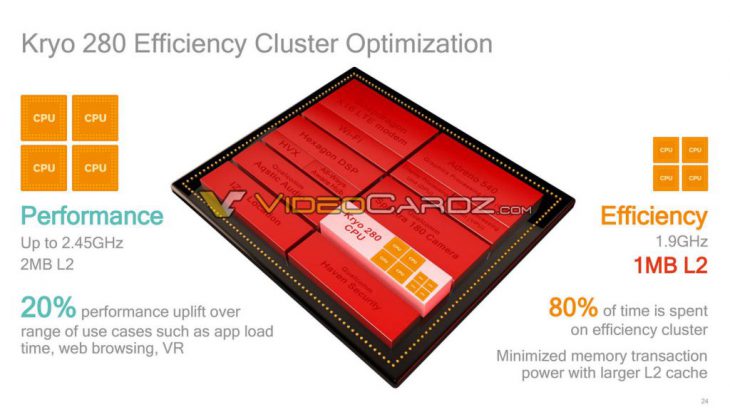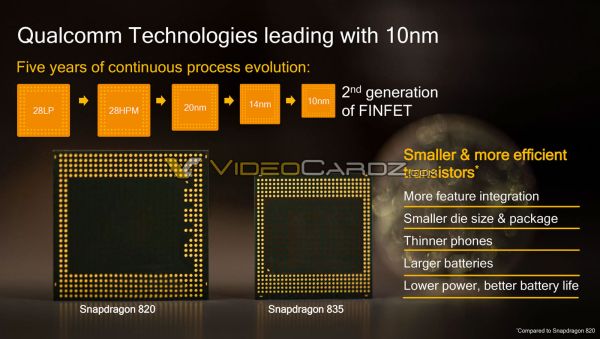
The processor that will power the next generation of Android smartphones has already been all-but-confirmed as the Snapdragon 835 from Qualcomm, and we’re expecting that announcement to be made as early as CES 2017 this week. A leaked slideshow, perhaps for use at CES (but I’d say more likely not), has confirmed some of the details from the new processor, and it’s time to get a bit excited.
In November, Qualcomm gave us some details about the new 835, including the benefits of the new die shrink to 10nm. This would deliver a a 27% performance improvement and up to 40% less power consumption compared to the previous version. The other advantage of a smaller die is a smaller processor, meaning thinner phones, or more space for other stuff.

Physical considerations aside, the octa-core Kryo 280 will provide up to 20% performance boost for VR, app load times, and web browsing when compared to the quad-core 2.15GHz and 1.6GHz Kryo in the Snapdragon 820. The CPU continues to use a big.LITTLE implementation with four high performance cores that can be clocked up to 2.45GHz.
Next to the four ‘performance’ cores are the quad-core ‘efficiency cluster’, which runs at up to 1.9GHz. Qualcomm estimates that a device with a Snapdragon 835 inside will spend up to 80% of its time only running on the efficiency core, allowing it to sip away at the juice and last longer.
As for graphics, the new Adreno 540 GPU can support 4K video at 60fps, with 25% faster rendering. The Hexagon 690 DSP supports Google’s machine learning library TensorFlow, allowing the Snapdragon 835 to do some interesting stuff.

Qualcomm is quoting up to 50% less power demand on the 835 vs the Snapdragon 801, but it is worth remembering the Snapdragon 801 (a) is a couple of years old now, and (b) consumed a heap of power, even by 2014 standards. A better comparison, or a more useful one, might be against the current range of 820 / 821 processors, though the differences would be much more nuanced.




Does “up to 40% less power consumption compared to the previous version” mean battery life will be 40% longer?
Only if they can reduce the consumption of screens, sensors etc too.